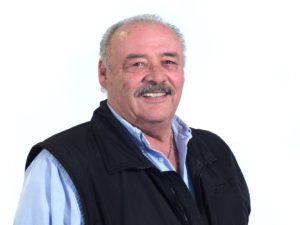Two different kinds of ponds are often used for flood control and stormwater runoff treatment: wet ponds and dry ponds. Both systems function to settle suspended sediments and other solids typically present in stormwater runoff.
Retention ponds maintain a pool of water throughout the year and hold stormwater runoff following storms.
Detention ponds hold water for a short period of time; this pond temporarily holds water before it enters the stream.
Retention Ponds
Wet ponds are also called retention ponds and they hold back water similar to water behind a dam. The retention pond has a permanent pool of water that fluctuates in response to precipitation and runoff from the contributing areas. Maintaining a pool discourages resuspension and keeps deposited sediments at the bottom of the holding area.
Detention Ponds
Detention ponds are more common in the arid west and serve as important flood control features. They are usually dry except during or after rain or snow melt. Their purpose is to slow down water flow and hold it for a short period of time such as 24 hours. Urban areas rely on these structures to reduce peak runoff rates associated with storms, decreasing flood damage.
Stormwater Solutions from Ron Meyer & Associates Excavating
We have experienced crews to lay storm pipe, storm manholes and catch basins at any depth, along with all needed equipment. We install and connect roof and footings drains to outgoing storm lines. We also build swales, retention ponds, and detention ponds for stormwater run-off purposes. We are experienced installing very large underground detention systems and are keeping ourselves up-to-date with the newest available systems to consider. We have several employees who are storm water certified in the State of Michigan.
We also have experience doing drain work for several municipalities including large box culverts, check dams, cleaning drains, constructing new drains, retaining wall, placing rip-rap to prevent wash-outs, etc.
At Ron Meyer & Associate Excavating, Inc, we’ve been providing underground and commercial construction to private and commercial businesses for 39 years. As the general contractor or subcontractor, our experienced foremen, equipment operators, pipe layers, truck drivers and well-maintained equipment fleet make us an undeniable choice for your excavating services. Let’s talk about your project!
Sources:
- https://www.lccdnet.org/wp-content/uploads/Ponds.pdf
Other Popular Blogs
- 13 Common Types of Excavation (By Type & Material)
- Excavation Shoring Methods & Shielding Types
- 5 Ways of Preventing Soil Erosion (for Homeowners)
- 20 Main Parts of an Excavator
- What is Cut and Fill in Excavation?
- Excavation Terminology: 15 Handy Trenching & Shoring Definitions

As 45 years of experience as an underground/site contactor and a third generation contractor, Ron takes time to go through each individual project with the supervisor and is responsible for all scheduling and equipment logistics. He’s also involved in all troubleshooting for projects.